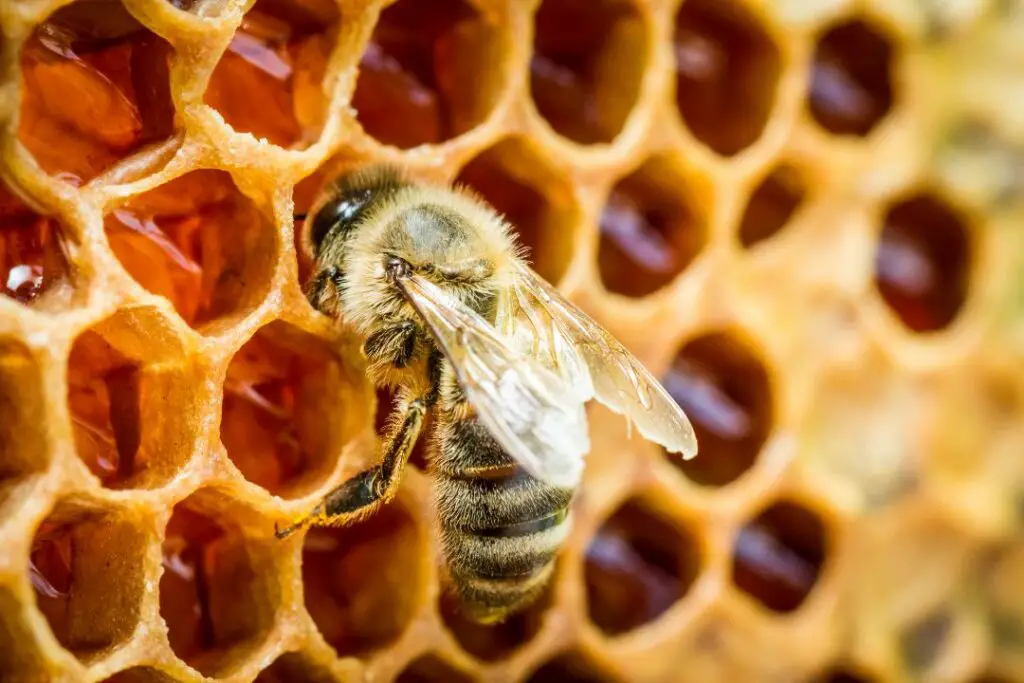Last updated on January 17th, 2024 at 01:57 pm
Honeycomb is a waxy structure honey bees make to store honey, pollen, and larvae.
It’s made of hexagonal cells that are a bit of an anomaly in the natural world.
But it’s so much more than that. From its delicious taste to its starling health benefits, it’s one of nature’s most amazing foods.
Click here if you’d prefer to watch a video about What is Honeycomb.
Let’s journey through the hive to learn about bees’ miraculous creation.
What Do Bees Use Honeycomb For?
These hexagonal cells are treasure troves used for holding raw honey, pollen, and the next generation of bees.
The colour varies from nearly white to dark brown, often depending on the type of nectar bees collect.
Worker bees deposit eggs in the honeycomb cells, eventually becoming larvae.
When the brood hatches, they become the next wave of worker bees, drones and even a virgin queen.
This buzz of life is also a target for wasps. The young larvae and honey within represent a treasure chest of food for an invader.
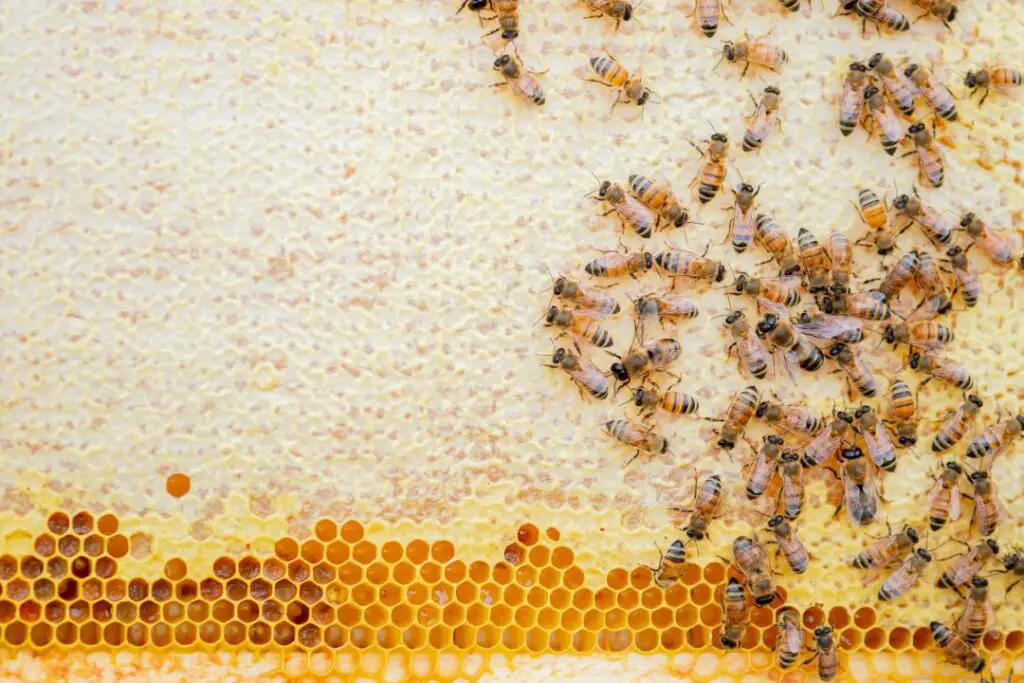
How Do They Make It?
This complex structure of hexagonal cells that make up the comb is made primarily of beeswax.
Young female worker bees, typically between 12 and 20 days old, are the beeswax architects.
These little alchemists transform nectar into the waxy substance that becomes the hive’s backbone.
Wax production
Bees consuming honey (made from the converted nectar) stimulate the pair of wax glands on their abdomen.
The tiny flakes of wax they secrete get collected by other worker bees in their mandibles.
They slowly chew the wax, mixing it with saliva to create a malleable wax.
When it’s ready to make a honeycomb, the young bee will begin to craft it into an ever-expanding canvas of hexagonal structures.
Why is it always in the shape of a hexagon?
This geometric shape is one of nature’s most startling creations.
And it’s no mere coincidence. It’s the result of millions of years of evolutionary fine-tuning.
Bees have selected the hexagon for efficiency and practicality.
The shape allows them to store the maximum amount of honey while using the least amount of beeswax. It’s a masterpiece of engineering!
And it’s a strong shape, offering a stable framework that withstands the stresses and pressures within the hive.
*Additional reading – Learn more about bee’s incredible architecture and why honeycomb is hexagonal.
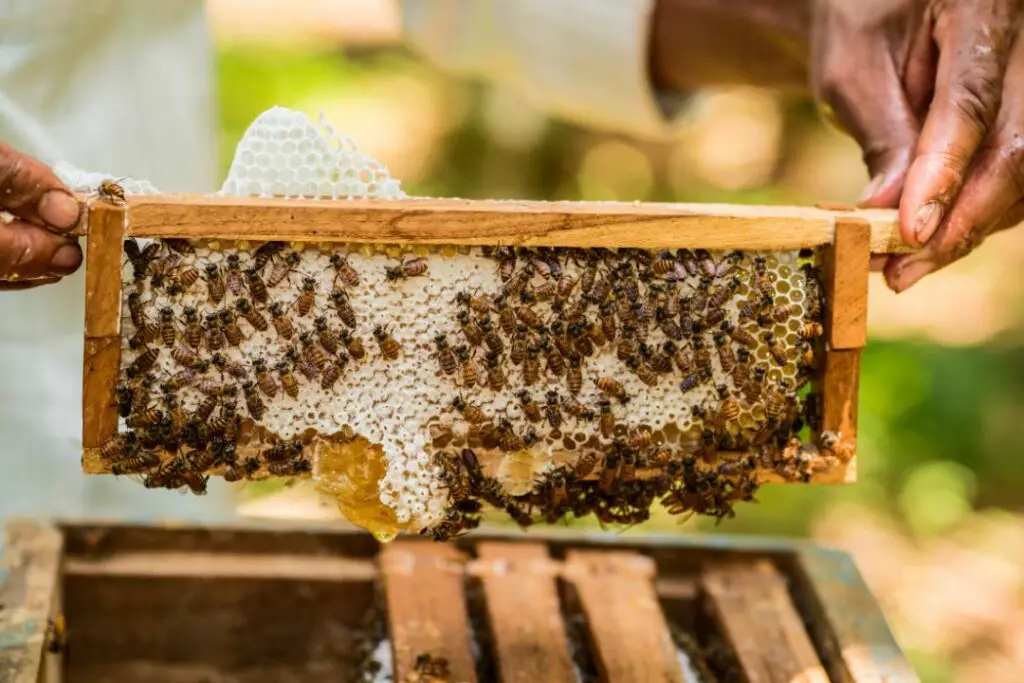
How Can You Use Honeycomb?
It’s a spectacle of nature’s ingenuity and a handy resource for humans.
The uses are as diverse as the flowers bees visit, from the kitchen to the beauty counter. Let’s explore!
Can you eat honeycomb?
Yes, snacking on honeycomb gives you honey in its purest form, straight from the hive.
It’s entirely edible, safe to eat, and an impressive antioxidant.
It pairs excellently with various cheeses, fruits, and bread, and it’s a perfect natural sweetener for a whole load of recipes.
Skincare
The beeswax that make up the honeycomb acts as a natural skin moisturizer.
Since this discovery, it has been a popular ingredient in many skincare products across the whole price range.
Candles
The beeswax that makes up the wax cells can be melted into various candle creations.
It’s a natural building material that makes for toxin-free candles, and you can still add your scents throughout the production process.
Burn treatment
Raw honey and beeswax have powerful antibacterial properties that can be used to treat wounds and burns.
It’s typically applied underneath a bandage and speeds up the healing process.
Is It Good For You?
For the most part, honeycomb is a winner in most people’s diets, especially if it replaces processed sugars with little nutritional value.
But even natural sugars can be harmful if you eat too much. Moderation is the name of the game here.
Health benefits
Honeycomb is more than just a marvel of natural engineering; it’s a treasure trove of health benefits.
Comprising beeswax, honey, and other compounds, it offers a unique blend of nutrients and medicinal properties.
It’s rich in carbohydrates and offers trace amounts of vitamins and minerals, including vitamin C, calcium, and iron.
Better yet, the beeswax adds long-chain fatty acids and alcohols.
Honey is rich in antioxidants that combat oxidative stress, preventing various health issues like inflammation and chronic diseases.
And last but not least, beeswax has anti-inflammatory properties that soothe skin conditions like eczema and dermatitis.
*Extra reading – Want to know more? Head over to our guide on the health benefits of eating honeycomb.
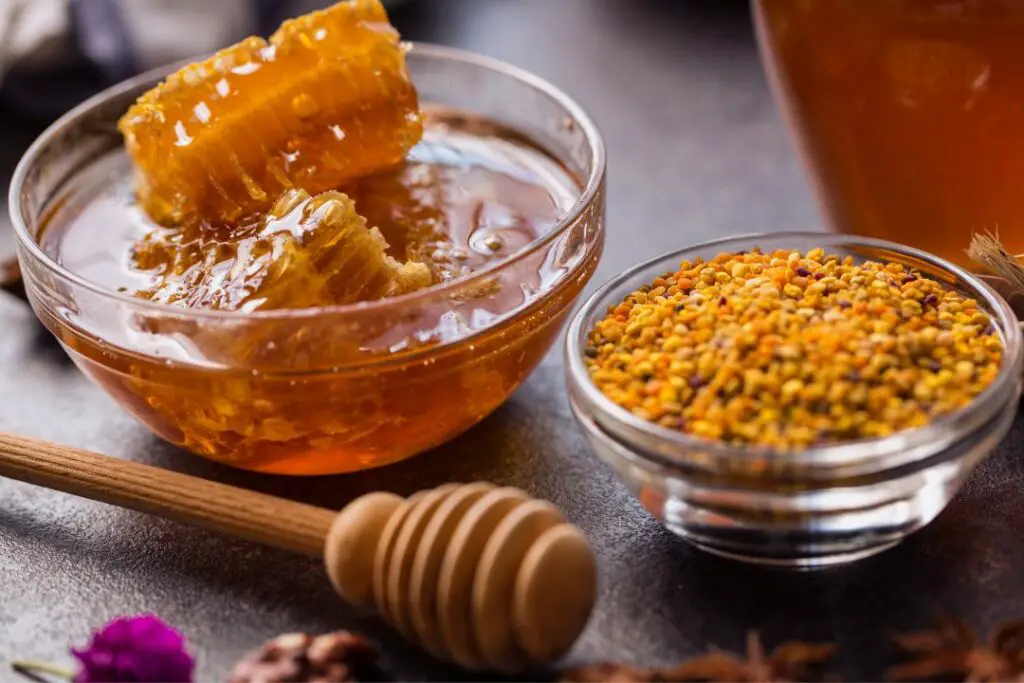
Honeycomb Or Honey?
The age-old question: honey or honeycomb?
Both are nature’s sweet gifts, courtesy of hardworking bees, and each has unique charms and uses.
| Aspect | Honey | Honeycomb |
|---|---|---|
| Texture | Liquid | Solid, waxy |
| Taste | Sweet | Sweet and waxy |
| Nutrients | Less diverse | More diverse |
| Versatility | High | Medium |
Similarities
- Origin: Both come from beehives and are made by bees.
- Sweetness: Honey is the main ingredient in honeycomb, so both are naturally sweet.
- Health benefits: They offer antimicrobial and antioxidant properties, though honeycomb has the added benefits of beeswax.
Why Choose One Over the Other?
As far as we’re concerned, both of these are essential shelf fillers, but if you have to choose one over the other…
Honey
- Versatility: From sweetening tea to glazing meats, its liquid form is easily incorporated into various recipes.
- Shelf Life: Properly stored, it has an almost indefinite shelf life.
Honeycomb
- Nutrient-Rich: The beeswax in the honeycomb contains additional nutrients and enzymes not found in honey alone.
- Experience: Eating honeycomb is a more tactile, engaging experience, offering a chewy texture and a wax that’s delightful to some.
History
From ancient to modern times, honeycomb has played a significant role in various aspects of human life.
Let’s take a historical journey to explore its significance throughout human life as we know it.
Egypt
In ancient Egypt, honeycomb was considered a delicacy and was often used in religious ceremonies.
It was also used for its medicinal properties, particularly for wound healing and as an embalming substance.
They even found honey left in ancient Egyptian tombs that was still sealed and perfectly edible.
Greece
In ancient Greece, honeycomb was highly valued for its nutritional and medicinal properties.
The great philosopher Aristotle wrote extensively about the benefits of honey and honeycomb.
In mythology, Zeus, the king of gods and Dionysus, the god of wine, were raised on a diet of exclusively honey.
Medieval Times
Monasteries often kept bees to produce honey and honeycomb, which they used for medicinal purposes and as a sweetener for food and beverages.
Buckfast Abbey in the UK is famed for the Buckafst bee, a cross of many fantastic sub-species for beekeeping.
So, as you can see, honeycombs and bees have been instrumental in the diets of our ancient ancestors worldwide.
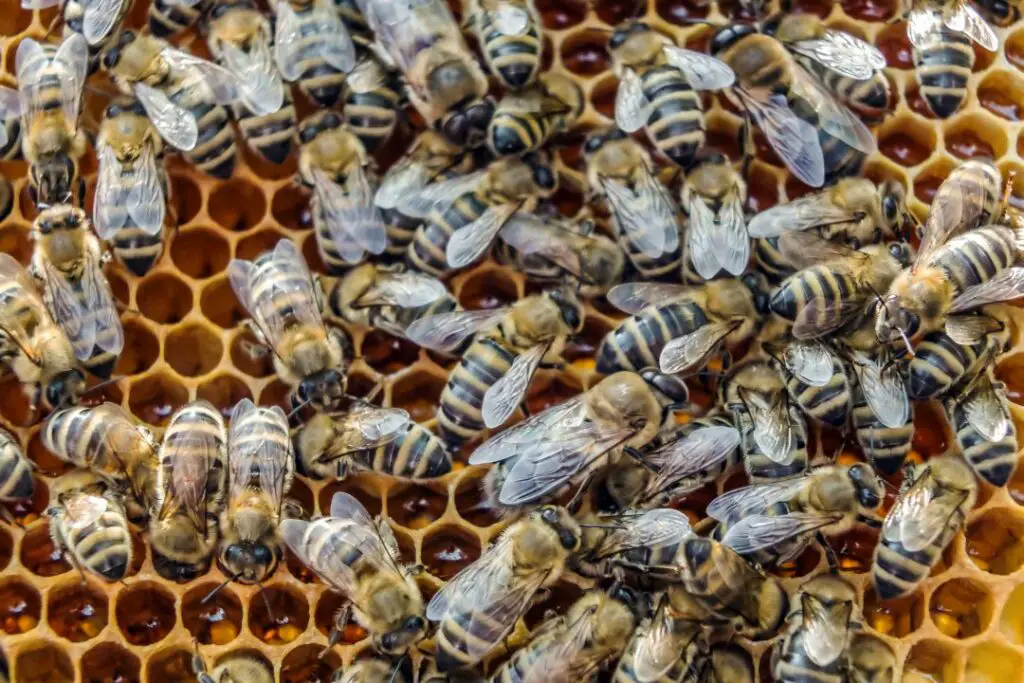
In Conclusion
Honeycomb is a remarkable masterpiece crafted by nature and cherished by bees. It’s not just a geometric wonder but a symbol of bees’ hard work, collaboration, and the sweet rewards they bring us.
From structural marvels, honey-storing capabilities, and its vital role in the hive, it’s a testament to the genius of evolution.
So, the next time you drizzle honey on your morning toast or marvel at the geometric wonder of honeycomb, take a moment to appreciate the intricate world of bees and the delicious bounty they provide.

